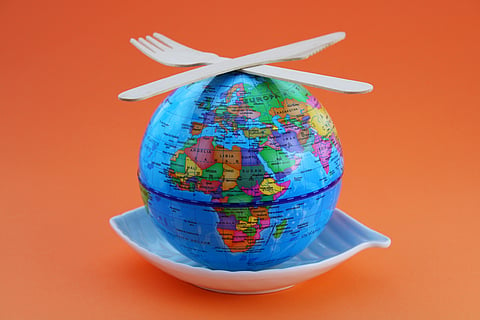

Imagine if every bite of food you took had a story — not just of taste and nutrition, but of climate, water, animals, and people. That’s what sustainable eating is all about. It’s not just about what’s on your plate, but how it got there, and how it affects the world around you. With the planet facing so many challenges, from rising temperatures to shrinking forests, the choices we make at mealtimes can either help or hurt. Surprisingly, some of the most powerful climate actions don’t happen in factories or governments — they happen in kitchens, lunch boxes, and school canteens.
UNSPLASH
So what exactly is sustainable eating? At its core, it means choosing food that’s good for you and good for the Earth. That means food grown in ways that protect nature, use less water, avoid harming animals, and don’t travel halfway across the world just to reach your plate. It also means not wasting food, eating only what you need, and learning to love local, seasonal fruits and vegetables. These changes may sound small, but when millions of people do them together, they can make a big difference.
To understand the impact, let’s go back a bit. For thousands of years, people ate mostly what they grew nearby — grains, roots, fruits, and a bit of meat or fish if they could. But as cities grew and global trade exploded, food began to travel long distances. Pineapples from Costa Rica, apples from New Zealand, and packaged snacks from Europe began appearing in markets everywhere. This made eating exciting, but also created problems. Transporting food over long distances means more lorries, more fuel, and more carbon emissions. Plus, some farming practices harm the soil, cut down forests, and use huge amounts of water.
African field cricket
CREDIT: Adrian Pingstone
Producing just one kilogram of beef can take over 15,000 litres of water. That’s more than a hundred bathtubs full! It also produces a lot of greenhouse gases — the same gases that cause global warming. Cows, in particular, produce methane, a powerful gas that traps heat in the atmosphere. This doesn’t mean we all have to stop eating meat, but even having meatless days — like “Meatless Monday” — can reduce our impact. Swapping red meat for lentils, beans, or eggs can save water, lower emissions, and still give you all the protein you need.
A big issue is food waste. Around one-third of all food produced globally is never eaten. It gets spoiled, thrown away, or rejected just because it doesn’t “look right.” But behind every banana or roti that ends up in the bin is a whole chain of effort — the farmer who grew it, the water used, the fuel for transport. When food is wasted, all those resources are wasted too. That’s why planning meals, finishing your portions, and reusing leftovers are simple but powerful ways to support the planet.
Luckily, there’s a growing movement among young people to eat better and wiser. School gardens are popping up in cities, teaching students how to grow their own herbs and vegetables. Many schools now have “no-waste lunches” or “green canteens.” Apps help families buy surplus food at cheaper rates, reducing waste. Chefs are getting creative with local ingredients — using jackfruit instead of meat, or turning vegetable peels into snacks.
It’s also important to eat with kindness — not just towards the planet, but towards the farmers and animals involved. Supporting fair-trade products means farmers get paid properly for their hard work. Choosing free-range or organic eggs means hens are treated more humanely. These may sound like small details, but they are acts of respect. Food connects us to nature, to cultures, and to each other. By choosing with care, we say thank you — to the soil, to the rain, to the people who made it possible.
And let’s not forget the joy of trying new things! Sustainable eating doesn’t have to be boring. It’s about experimenting — with millet pancakes, banana-stem curry, or cucumber raita instead of processed foods. It’s about making friends with regional grains like ragi, bajra, or jowar — ancient crops that are hardy, healthy, and need far less water than polished rice. Many of these grains have been part of Indian kitchens for centuries but are now making a comeback as climate-smart foods.
Change doesn’t have to happen overnight. Even one choice a day — like saying no to plastic-packaged snacks or choosing a seasonal fruit — makes a difference. When you talk to your family about where your food comes from or help reduce waste at home, you’re already part of the solution. Eating sustainably is about turning mealtimes into mindful moments. It’s about knowing that your fork is also a tool — one that can shape the future.
So the next time you’re hungry, pause for a moment. What you choose to eat isn’t just fuel for your body. It’s a vote for the kind of world you want to live in. A world that is greener, fairer, and full of delicious surprises — one smart bite at a time.